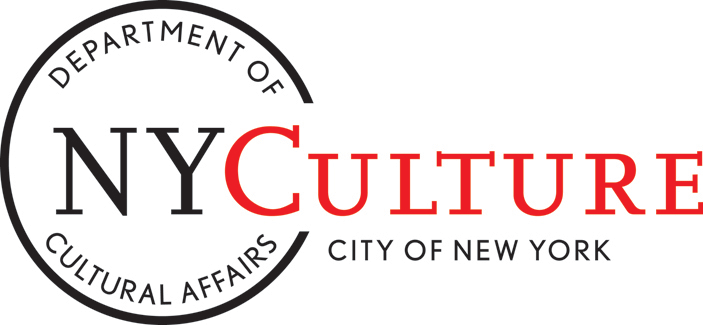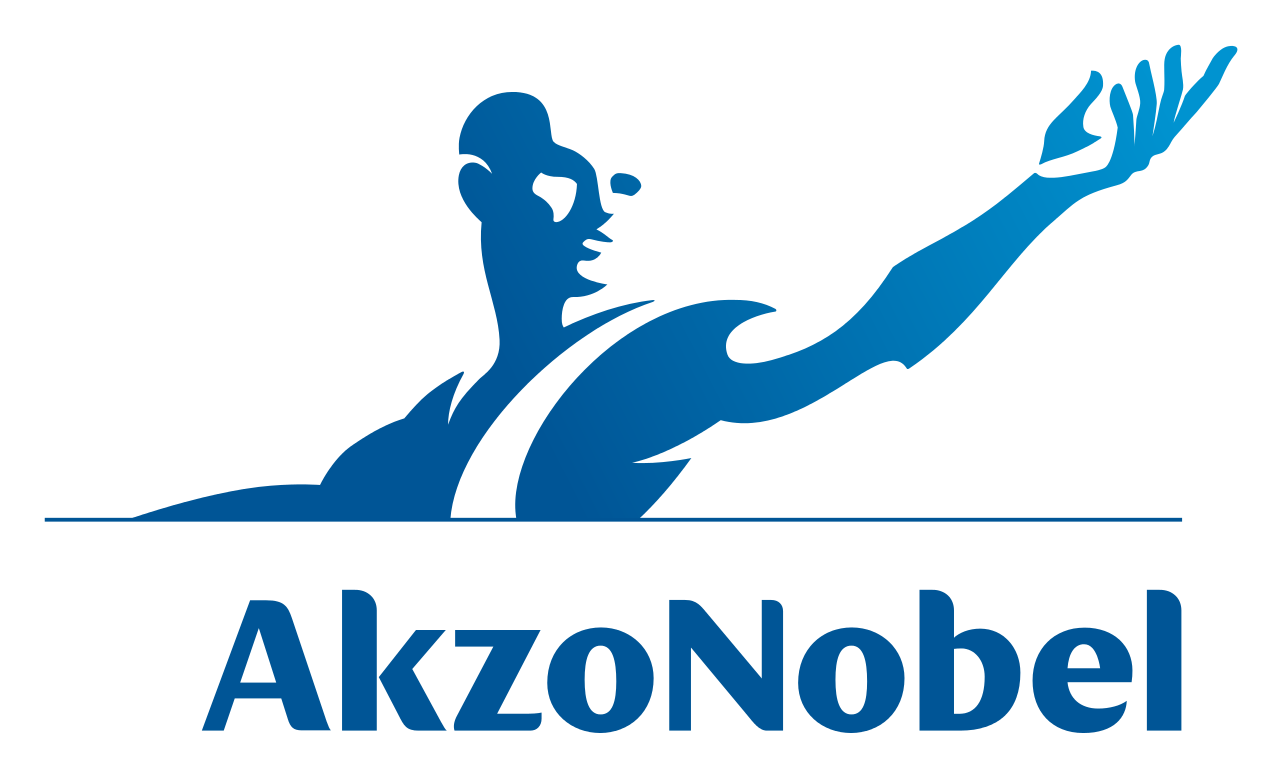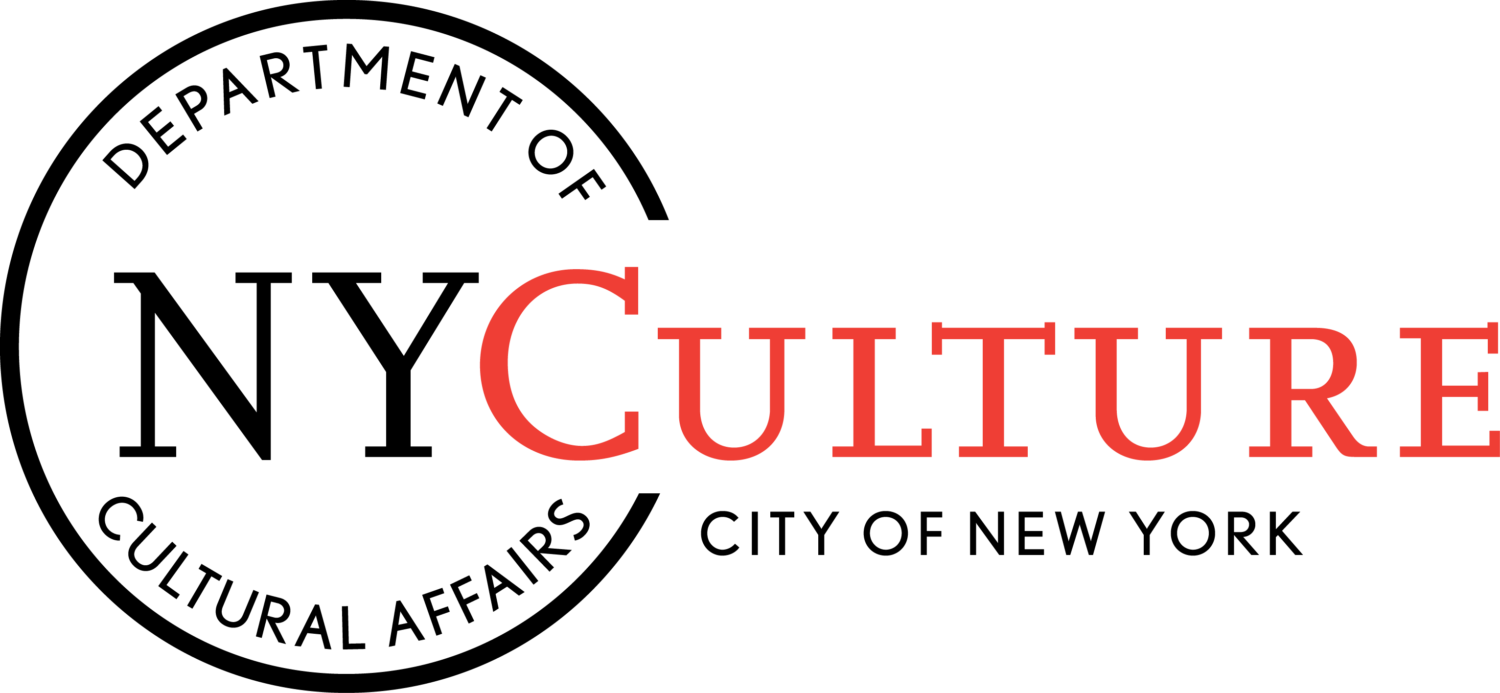Van Alen Sessions is an online short-documentary series highlighting current debates about infrastructure. Produced in collaboration with The New Yorker, Van Alen Sessions videos take viewers on revealing trips through the internal workings of a particular place, documenting conversations with design and planning practitioners, as well as other specialists and local residents. The series brings together the analysis of experts and the experiences of ordinary people.
SEASON SIX
Borderlands depicts three pairs of cities along the U.S.-Mexico border: San Diego and Tijuana; Brownsville and Matamoros; and El Paso and Juarez. In each pair of cities, the film considers how design can increase cross-border collaboration, strengthen these cities’ social and economic networks, and mitigate the environmental impact of border-wall construction. Directed by Merete Mueller, Borderlands features interviews with Ana Eguiarte, the binational liaison of the Tijuana River National Estuarine Research Reserve; Mauricio Ibarra, a city planner in Matamoros; and architect Ronald Rael, who—along with Virginia San Fratello—created the pink seesaws straddling the El Paso-Juarez border wall that became a viral news story this summer. Through our media partnership with The New Yorker, Borderlands has reached approximately 320,000 viewers worldwide since its release in November 2019.
WATCH
Season Six Supporters
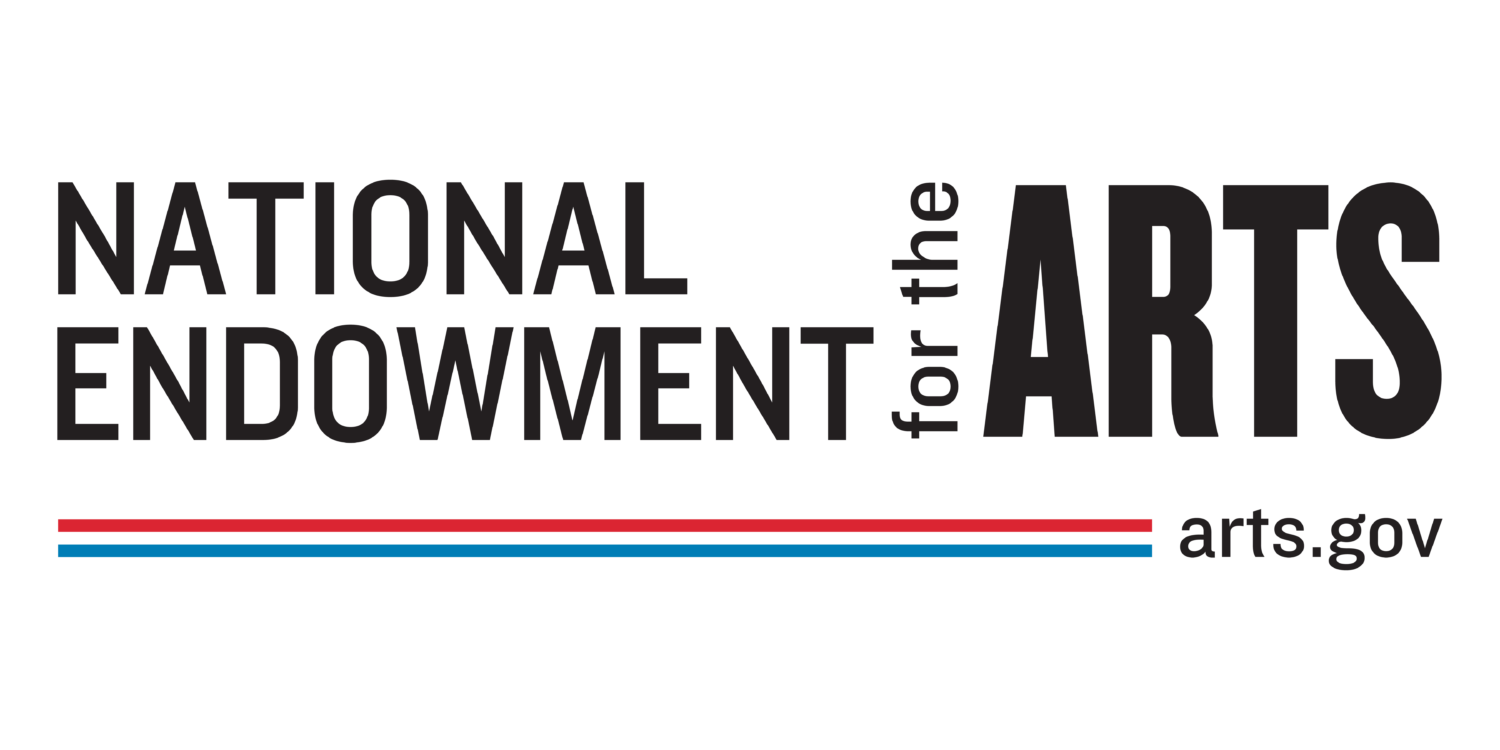

SEASON FIVE
The “Wildland-Urban Interface,” where homes are built near or among undeveloped lands, is the fastest growing type of land use in America. While the demand for this kind of housing grows across the Western U.S., more intense and frequent wildfires are destroying lives, homes, and forests in these areas at record levels. What role can design play in fireproofing the future of these communities? Heartbreaking footage and stories from experts and everyday people living and working in the fire zones of California illustrate the choices we must make to build safer homes and communities in the era of climate change. Through our media partnership with The New Yorker, “Fireproofing” has reached more than 460,000 viewers worldwide since its release in February 2019.
WATCH
Season Five Supporters

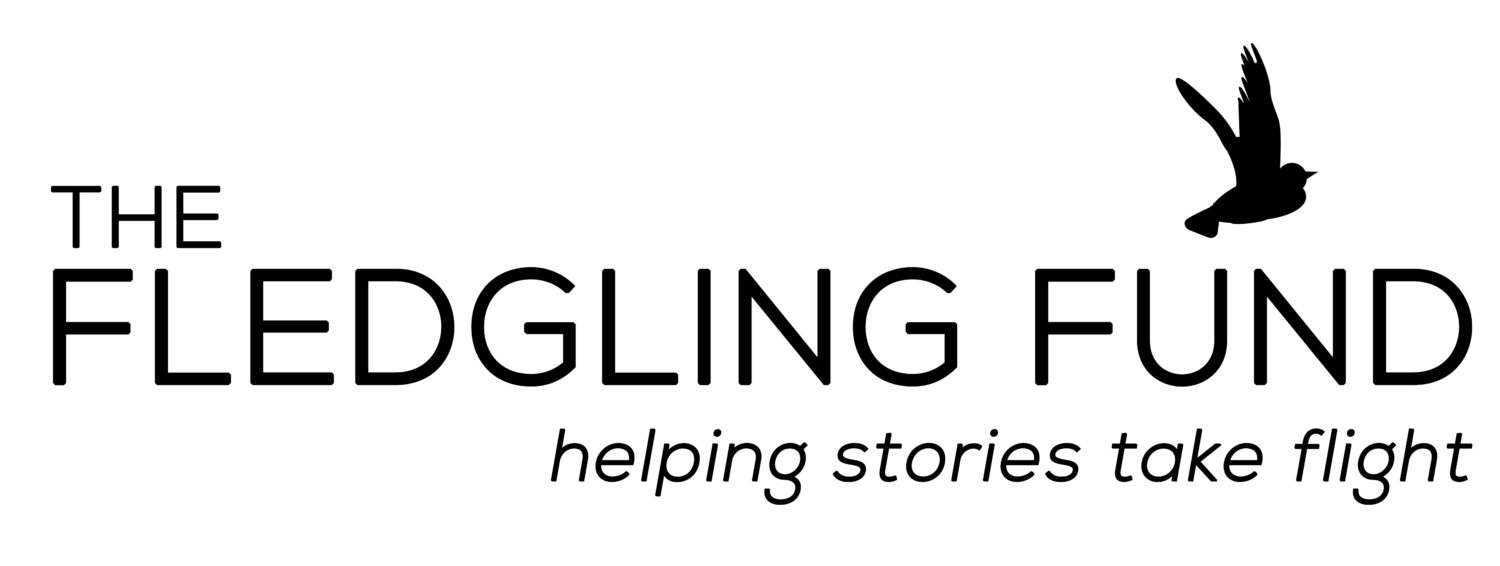

SEASON FOUR
In Season Four of Van Alen Sessions, Turning the Tide in Miami, we explore how the people of South Florida are banding together to fight climate change and the effects of sea level rise. The series investigates what is at stake for the city of Miami in terms of the viability of its infrastructure, drinking water supply, real estate-driven economy, and the overall well being of its residents, in particular, its most poor and vulnerable populations. These episodes profile Miamians from all walks of life, from real estate developers to artists, ecologists, and activists, and their efforts to ensure that their city will remain not only habitable but also become more hospitable, in the decades to come. Our media partner for this season, The New Yorker, generously provided editorial direction and feature four of the episodes in a story on their website.
WATCH
Episode 1: Adapting to Climate Change
As the realities of climate change and sea level rise plunge Miami into an unprecedented period of habitual flooding, can residents rise to the challenge of reinventing the city’s physical and social fabric to ensure that their neighborhoods will remain habitable in upcoming decades? This overview episode illustrates just how vulnerable South Florida is to the rising tide, and introduces us to those on the front lines of working to make the region more resilient. They propose that the time is ripe for the people of Miami to take bold action to come up with new and imaginative solutions that will make the city stronger and more livable in the future.
Episode 2: Planting Trees to Fight Flooding
When seawater threatens to inundate the city from all directions, what can Miamians do to protect their homes and businesses, safeguard their drinking water supply, and restore an ecological balance? This episode profiles the efforts of scientists and landscape architects to study the impacts of sea level rise and saltwater intrusion on both the urban and rural environment in South Florida, and to develop resilient design strategies that work in concert with the region’s natural systems. It suggests that, in order to deal with a problem that has both natural and man-made origins, planners must combine ecological principles with human ingenuity to produce sustainable solutions.
Episode 3: The Cost of Sea-Level Rise
In a city that depends so heavily on real estate as the cornerstone of its economy, how can Miami’s future livelihood by guaranteed when when its buildings are increasingly at risk due to rising seas? In this episode, city officials, real estate developers, and local homeowners reveal just how costly floods are to the city, not only due to direct property damage, but also in terms of deterioration of the tax base and decline in social services. They argue that private property owners, the business community, and government authorities must work in close cooperation in order to keep buildings and infrastructure safe, maintain economic prosperity, and increase social welfare for all of Miami’s citizens.
Episode 4: Climate and Gentrification
As Miamians begin to relocate to higher ground and property developers sharpen their focus on poor and underserved inland neighborhoods, how can existing residents of these districts stand their ground in the face of intensifying gentrification? In this episode, we walk the streets of Liberty City with a local activist who recounts the neighborhood’s legacy of segregation as well as the new perils associated with gentrification, and we visit a community farm where marginalized residents grow food to contribute to the local economy and improve the health of the neighborhood. Our informants point out that it’s the local residents who know best about what communities need to become more equitable and resilient.
Episode 5: The Art of Fighting Climate Change
When tackling relatively slow moving threats like climate change and sea level rise, how can artists, educators, and activists motivate the people of Miami to fight now for change that will increase the city’s chances of survival in the future? This episode profiles how art and technology can be combined in augmented reality murals to raise awareness of rising seas and how outreach to schools and community groups can create new coalitions of concerned citizens. The future livability of Miami does not just depend upon rational solutions to technical problems, but also hinges upon the will of its people to passionately fight for the soul of their city.
Season Four Supporters
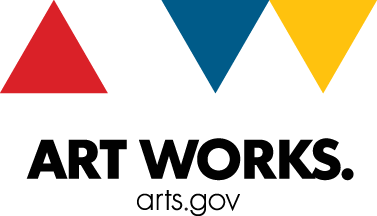
Season Four: Turning the Tide in Miami is supported in part by an award from the National Endowment for the Arts
SEASON THREE
Season Three of Van Alen Sessions, Autonomous Infrastructure, explores how three U.S. cities combine cutting-edge technology and old-fashioned ingenuity to manage critical resources and structures for urban life. Directed and produced by filmmaker Lucy Wells, these three episodes investigate the capacities and limits of innovative, automated systems that clean up harbors, inspect bridges, and generate electricity in drinking water pipes. The expert insight of engineers and the stories of everyday people illuminate how robots and drones can make cities safer, cleaner, and more energy efficient. Despite these technical advances, this season reminds us that the human elements of foresight, imagination, and care for each other and the environment are still indispensable in advancing more livable communities.
Watch
Episode One of Autonomous Infrastructure showcases how automated trash collection wheels are cleaning up Baltimore Harbor. Not only are these devices known for their effectiveness in removing trash from the city’s waterways, but Mr. Trash Wheel and Professor Trash Wheel have also become local celebrities thanks to their anthropomorphized googly eyes, personalities, and even their own social media accounts. John Kellett, inventor of the trash wheel, Adam Lindquist (Waterfront Partnership of Baltimore), and Jeffrey Raymond (Baltimore Department of Public Works) explain how these lovable characters have raised the public’s awareness and appreciation of the city’s inventive public works programs and environmental cleanup efforts.
Episode Two of Autonomous Infrastructure delves under the streets of Portland, Oregon to investigate how turbines embedded in the city’s drinking water delivery pipes are generating electricity. Dr. Nina Bergen French (Lucent Energy) explains how the turbine system converts hydraulic energy that would otherwise be wasted into electricity that can power hundreds of homes, while having minimal impact on fish or other wildlife. Stan VandeBergh (Portland Water Bureau) discusses how Lucent’s turbines are the latest innovation in a long history of forward-looking planning that has ensured that clean and abundant water is available for the city’s growing population.
Episode Three of Autonomous Infrastructure soars over the streets of Minneapolis to survey how the Minnesota Department of Transportation is studying the use of drone technology for bridge inspections across the state. While flying drones, sometimes via X-box controllers, may seem to be a fun pastime, ensuring that Minnesota’s 20,000 plus bridges are in good condition is serious business. Sarah Sondag (MN Department of Transportation) and Barritt Lovelace (Collins Engineers) describe how drones can augment bridge inspections with faster, safer, and more cost effective methods in comparison to older, more manual maintenance routines.
Van Alen Sessions Season Three is made possible with support from the National Endowment for the Arts, and is supported, in part, by public funds from the New York City Department of Cultural Affairs in partnership with the City Council.
Special thanks:
Komal Kehar
Season Two
Power Lines, the second season of Van Alen Sessions, explores the relationship between energy infrastructure and communities. Episodes spotlight the outdated systems that currently put millions of city dwellers at risk, and reveal ambitious ideas for tomorrow’s electricity networks.
Directed and produced by artist and journalist Kelly Loudenberg, with research conducted by students in the masters program in design research, writing, and criticism at School of Visual Arts, this new season broadcasts the voices of people powering oftentimes invisible energy infrastructure, and an up-close examination of the cities, landscapes, and regions in three corners of the U.S. impacted by major shifts in the electric grid.
Watch
Episode One highlights the shift underway among citizens of Los Angeles from energy consumers to producers as they channel solar electricity from their homes and onto the grid. Graham Richard (Advanced Energy Economy) explains the enormous potential of solar energy in sun-soaked California, which now employs nearly three-times as many people in clean energy than in film and television industries. The episode takes us to an installation site on a rooftop in Watts, where women in a training program tell the stories of how they’re bringing power to the people—and empowering themselves.
Episode Two of Power Lines departs from the metropolitan hubs of past episodes, taking viewers to the boom-and-bust towns of South Texas that are part of the Eagle Ford natural gas field. The population influx that came with the arrival of shale drilling in 2008 has collapsed with oil prices—Texas lost 72,000 oil and gas jobs in 2015—leaving cities with half-built infrastructure and desolate “man camps”. Viewers will hear from a gas pipeline inspector, the chamber of commerce manager of Dimmit County, an RV park supervisor, and an industry journalist, all of whom are asking if their region has witnessed its final surge of petroleum-fueled prosperity.
Episode Three of Power Lines takes us inside the Pilgrim Nuclear Reactor in Plymouth, Mass., where a planned 2019 shutdown has locals struggling with impending economic turmoil, toxic waste storage, and the dilemma of meeting lower emissions standards while letting go of the zero carbon footprint of nuclear energy. A plant safety inspector, local environmental activists, and Plymouth’s economic development manager offer first-hand insight on what the energy future holds in one of the nation’s first cities.
Van Alen Sessions Season Two is made possible with support from the National Endowment for the Arts, and is supported, in part, by public funds from the New York City Department of Cultural Affairs in partnership with the City Council.
Special thanks:
Alexandrea Klimoski
Jennifer Young
Season One
The first season of Van Alen Sessions, Tunnel Vision, directed and produced by artist and journalist Kelly Loudenberg, leads viewers through massive tunnel transportation infrastructure projects. With behind-the-scenes research provided by graduate students in design and public policy, this focus serves as a lens for understanding how large-scale interventions impact the way we move in, around, and between cities every day. The three episodes document what it takes to create the transit networks that shape our routines and relationships.
Watch
Episode One of Tunnel Vision illustrates the $20 billion Gateway Project, a high-speed rail corridor designed to alleviate the bottleneck along the Northeast Corridor. The video offers new vantage points into ongoing tunnel construction, offset with first-hand accounts from New Jersey Transit and Amtrak commuters. Interviews with Petra Messick (Amtrak) and Tom Wright (Regional Plan Association) provide insight onto the current transportation crisis due to outdated infrastructure and deterioration caused by Hurricane Sandy.
Episode Two of Tunnel Vision offers backstage access to the technology lab working on a prototype for Hyperloop, a $6 billion high-speed transportation system connecting Los Angeles and San Francisco. Christopher Hawthorne, architecture critic for The Los Angeles Times, frames the project within the larger context of high-speed rail initiatives in California and the debate surrounding private versus public investment in infrastructure.
Episode Three of Tunnel Vision brings viewers deep inside Seattle’s new U Link rail stations before they open in March 2016. Transit activist Jon Cracolici provides personal commentary about this 20-years-in-the-making event, while Sound Transit representative Kimberly Reason and construction outreach manager Gary Bruce explain in clear terms how Seattle is not just a center for information technology, but infrastructure innovation.
Van Alen Sessions Season One was made possible with support from the National Endowment for the Arts, AkzoNobel, Graham Foundation for Advanced Studies in the Fine Arts, and is supported, in part, by public funds from the New York City Department of Cultural Affairs in partnership with the City Council.
Special thanks:
Sarah Farwell
Katherine Ranieri (Olson Kundig)
Public Programs
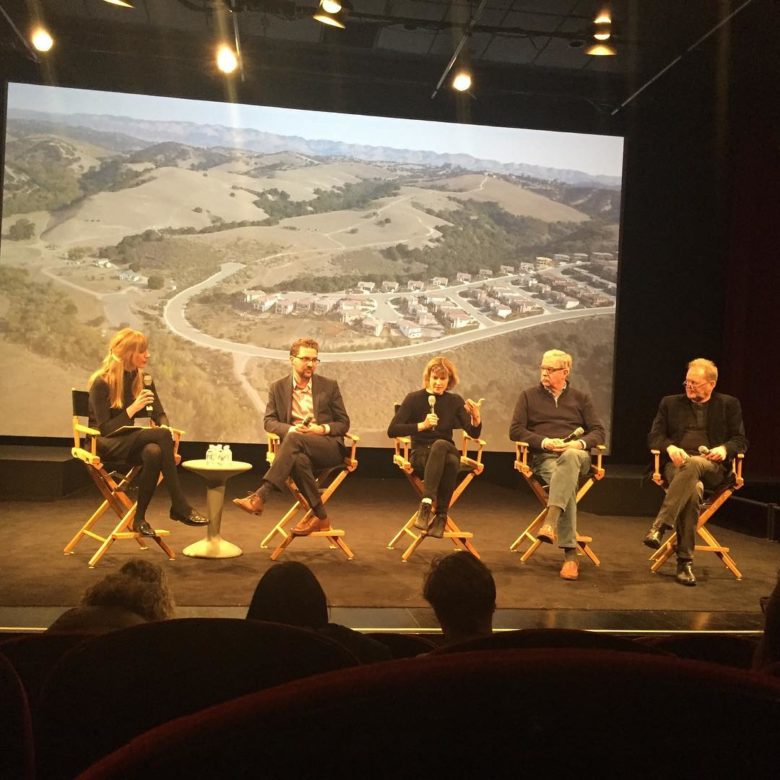
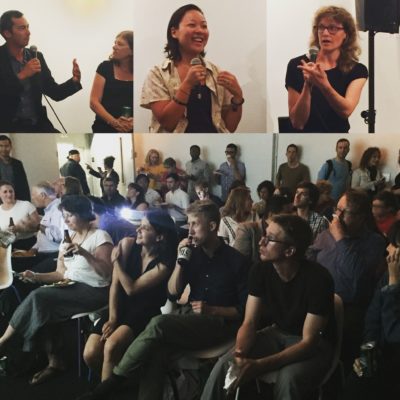
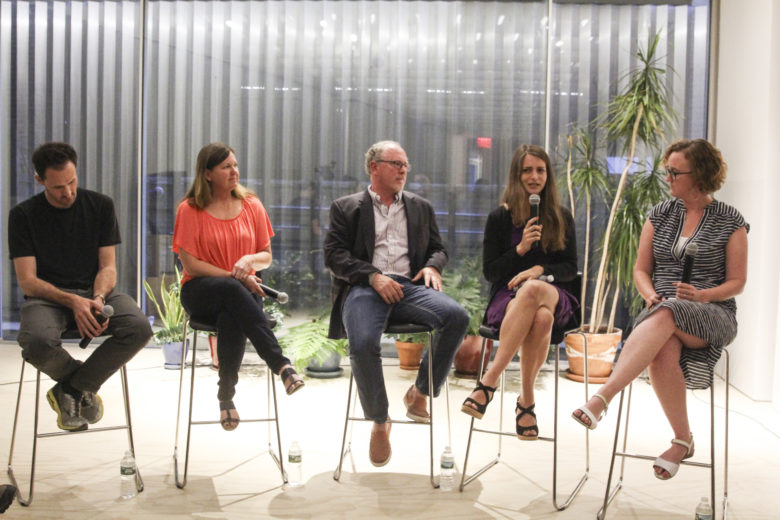
Van Alen, The New Yorker, and SVA MA Design Research, Writing & Criticism presented Van Alen Sessions Season Five: Fireproofing the Future in California at SVA Theatre on February 11, 2019. Attendees experienced the full power of the footage, audio, and graphics of this video in a cinema setting on Chelsea’s West 23rd Street and listened to a panel discussion moderated by New Yorker Staff Writer Carolyn Kormann afterward. Panelists included the director of Sessions Seasons Four and Five Merete Mueller; Van Alen Institute board member and Climate Council co-chair Mark Johnson, FASLA, President of Civitas; climate scientist and drought expert Robert Field from Columbia University and NASA Goddard Institute for Space Studies; and Bob Williams, president of Pine Creek Forestry in New Jersey.
On June 28, 2018, we held the first public screening and panel discussion of Van Alen Sessions Season Four: Turning the Tide in Miami at 30 West 22nd Street in Manhattan. The event gave the audience a window into the local Miami climate conversation and creative solutions for urban resilience. Following the screening, our Special Programs Coordinator, Anjali Fisher, introduced our panelists: Director Merete Mueller, Linda Cheung, founder and CEO of Miami Murals, and founders of Local Office Landscape Architecture and Parsons faculty members Walter Meyer and Jennifer Bolstad.
And on November 2, 2017, we premiered Van Alen Sessions Season Three: Autonomous Infrastructure at the Architecture & Design Film Festival. Following the screening, the audience participated in a fast-paced conversation that dug deeper into how some cities are changing the narrative of our nation’s crumbling infrastructure while engaging local citizens. The dialogue included commentary from Nicole Flatow, editor, CityLab; Molly Heintz, chair, School of Visual Arts MA Design Research, Writing and Criticism; Petra Messick, director, Gateway Program Planning, Amtrak; and Lucy Wells, director, Van Alen Sessions, and was moderated by Steven Thomson, managing producer, Van Alen Sessions and programs and communications manager, Van Alen Institute.
On June 15, 2016 we hosted a preview screening and discussion of Van Alen Sessions, Season Two: Power Lines, with Mark Alan Hughes, professor of practice at PennDesign, faculty director of the Kleinman Center for Energy Policy, and lead investigator at the Department of Energy’s Energy Efficient Buildings Hub at the Philadelphia Navy Yard; documentary director and producer Kelly Loudenberg; Sommer Mathis, editor, CityLab; and Wes Rozen, partner, SITU Studio, and author Ginger Strand.

